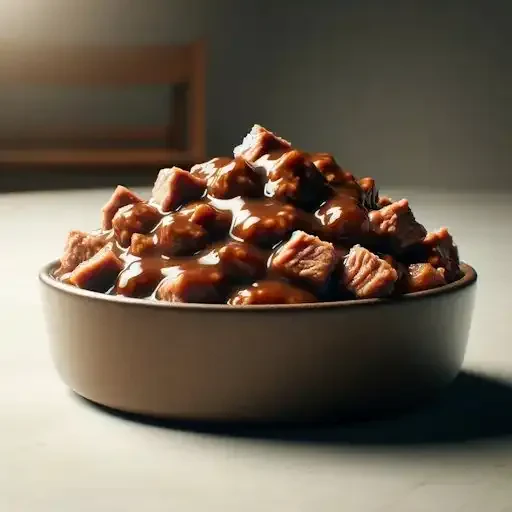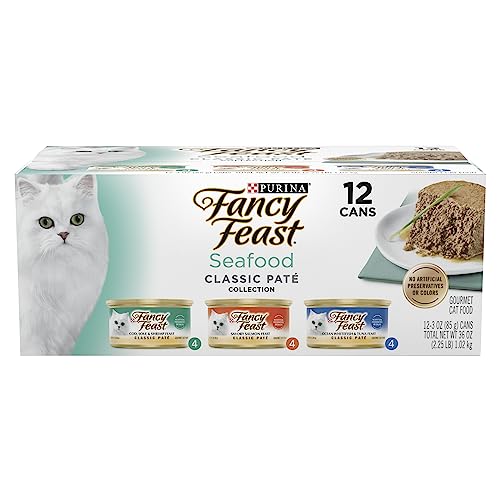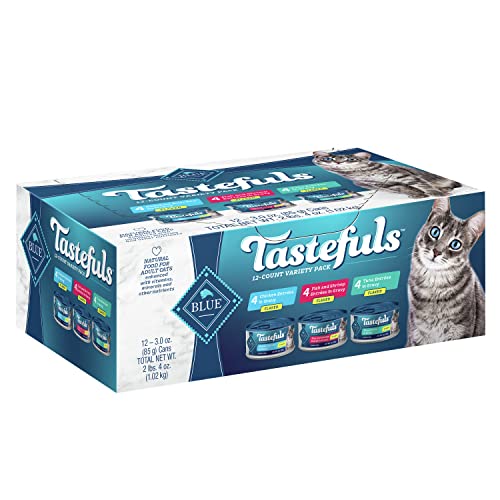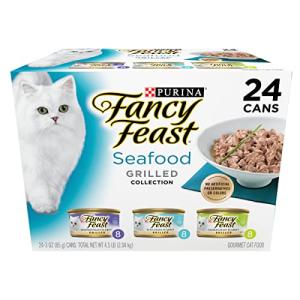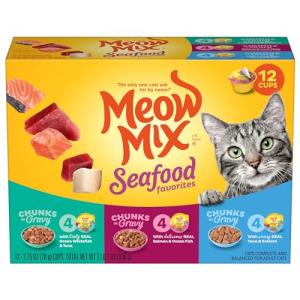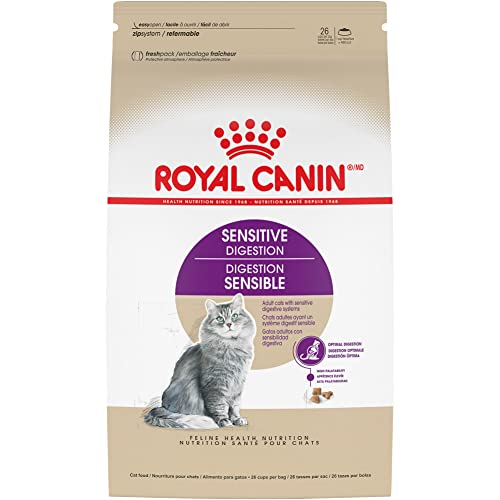Wet cat food has emerged as a staple in the diets of feline companions worldwide, with its popularity steadily rising over the years. Unlike its dry counterpart, wet cat food offers a variety of textures, flavors, and nutritional benefits that cater to the unique dietary needs of cats.
Brief overview of the popularity of wet cat food
Wet cat food has gained significant traction among cat owners due to its palatability and moisture-rich content, which closely mimics the texture and consistency of prey animals in the wild. This popularity is further fueled by an increasing awareness among pet owners regarding the importance of providing balanced and species-appropriate nutrition to their feline companions.
Importance of nutrition in a cat's diet
Nutrition plays a pivotal role in the overall health and well-being of cats. As obligate carnivores, cats have specific dietary requirements that primarily consist of high-quality protein, essential amino acids, vitamins, and minerals. Meeting these nutritional needs is crucial for maintaining optimal body condition, supporting healthy growth and development, and preventing a myriad of diet-related health issues.
Purpose and structure of the article
This article aims to delve into the world of wet cat food, exploring its numerous benefits, important considerations for cat owners, and offering recommendations for top-quality options. From understanding the nutritional value of wet cat food to addressing common concerns and myths, this comprehensive guide will provide cat owners with the necessary knowledge to make informed decisions about their feline companions' diets. Moreover, it will offer insights into introducing wet cat food into a cat's diet, recommendations for different life stages, and even explore the feasibility of homemade options. By the end of this article, readers will gain a deeper understanding of wet cat food and its role in promoting the health and happiness of their beloved furry friends.
Understanding Wet Cat Food
Wet cat food, also known as canned cat food or moist cat food, is a type of pet food that comes in sealed cans or pouches and contains a high moisture content. This moisture content typically ranges from 70% to 85%, making it an excellent source of hydration for cats.
Definition and composition of wet cat food
Wet cat food is primarily composed of meat, poultry, or fish as the main ingredient, often supplemented with additional sources of protein, such as organ meats and meat by-products. Unlike dry cat food, which is typically processed into kibble, wet cat food is processed through methods like canning or pouching, where the ingredients are mixed, cooked, and sealed to preserve freshness and nutrients. Additionally, wet cat food may contain added vitamins, minerals, and other nutrients to ensure a balanced diet for cats.
Comparison with dry cat food: advantages and disadvantages
Wet cat food offers several advantages over dry cat food. Firstly, its high moisture content helps promote hydration, which is essential for maintaining urinary tract health and preventing issues like urinary crystals and kidney disease. Wet cat food also tends to be more palatable for cats, making it an ideal choice for picky eaters or cats with dental issues. However, wet cat food may be more expensive per serving compared to dry cat food, and it requires refrigeration after opening to prevent spoilage. Additionally, some cat owners may find the odor and mess associated with wet cat food less appealing than dry options.
Evolution of wet cat food: historical context
The evolution of wet cat food traces back to the early 20th century when canned pet food first became commercially available. Initially, wet cat food consisted of simple formulations containing primarily meat by-products and fillers. However, as our understanding of feline nutrition advanced, so did the formulation of wet cat food. Modern wet cat food options now offer a wide range of protein sources, flavors, and specialized formulations to cater to various dietary needs and preferences of cats. The continuous refinement of wet cat food formulations reflects our ongoing commitment to providing cats with high-quality, nutritious diets that promote their health and well-being.
Nutritional Value and Health Benefits
Wet cat food boasts a plethora of essential nutrients that contribute to the overall health and well-being of our feline companions. From promoting hydration to addressing specific health concerns, the nutritional value of wet cat food cannot be overstated.
Essential nutrients in wet cat food
Wet cat food is rich in high-quality proteins sourced from meat, poultry, or fish, which are crucial for maintaining lean muscle mass, supporting healthy growth and development, and providing essential amino acids. Additionally, wet cat food often contains optimal levels of vitamins, minerals, and antioxidants necessary for bolstering the immune system, supporting organ function, and promoting overall vitality. The balanced nutrient profile of wet cat food ensures that cats receive the necessary building blocks for a thriving and healthy life.
Impact on hydration and urinary tract health
One of the standout benefits of wet cat food is its high moisture content, which plays a vital role in maintaining proper hydration levels in cats. Adequate hydration is essential for supporting kidney function, regulating body temperature, and preventing urinary tract issues such as urinary crystals and kidney disease. By incorporating wet cat food into a cat's diet, pet owners can help ensure that their feline companions remain adequately hydrated, reducing the risk of urinary tract issues and promoting urinary tract health.
Dental health considerations
Contrary to popular belief, wet cat food can contribute to maintaining good dental health in cats. While dry cat food is often touted as beneficial for dental health due to its abrasive texture, wet cat food offers its own advantages. The chewing action required to consume wet cat food can help reduce plaque and tartar buildup on teeth, thus promoting oral hygiene. Additionally, the moisture content in wet cat food can help soften food particles, making them less likely to adhere to the teeth and gums. However, regular dental care, including brushing and dental check-ups, remains essential for optimal dental health in cats.
Special formulations for specific health needs (e.g., weight management, hairball control)
Many wet cat food brands offer specialized formulations tailored to address specific health concerns or dietary requirements of cats. These may include weight management formulas with controlled calorie and fat content to support healthy weight loss or maintenance. Additionally, there are wet cat food options designed to help control hairballs by incorporating dietary fibers that aid in digestion and reduce hairball formation. By choosing wet cat food formulated to meet their cat's specific needs, pet owners can provide targeted support for their feline companion's health and well-being.
Factors to Consider When Choosing Wet Cat Food
Selecting the right wet cat food for your feline companion involves considering several important factors to ensure they receive optimal nutrition and enjoy their meals. Here are key considerations to keep in mind:
Ingredient quality and sourcing
When evaluating wet cat food options, pay close attention to the quality and sourcing of ingredients. Look for brands that prioritize high-quality proteins from reputable sources, such as whole meats or named meat meals, rather than by-products or unspecified meat sources. Additionally, opt for products that use wholesome ingredients and avoid artificial preservatives, colors, and flavors.
Protein content and sources
Protein is a critical component of a cat's diet, so it's essential to choose wet cat food with adequate protein content. Ensure that the protein sources listed on the label are species-appropriate and provide essential amino acids for your cat's overall health and well-being. Aim for wet cat food options with a protein content of at least 25% to 30% on a dry matter basis.
Avoidance of common allergens and filler
Cats can develop food allergies or sensitivities to certain ingredients, so it's crucial to avoid common allergens such as grains, soy, and dairy products if your cat has known sensitivities. Additionally, steer clear of fillers like corn, wheat, and soy, which offer little nutritional value and may contribute to digestive issues or obesity.
Texture preferences and palatability
Cats are notorious for being picky eaters, so consider your cat's texture preferences and palatability when selecting wet cat food. Some cats may prefer pate-style wet food, while others may prefer chunks or shreds. Experiment with different textures to find what your cat enjoys most. Additionally, choose flavors that align with your cat's preferences to ensure they eagerly consume their meals.
Packaging types and sustainability concerns
Consider the packaging type of the wet cat food and its environmental impact. Opt for brands that use eco-friendly packaging materials, such as recyclable cans or pouches, and prioritize sustainability in their manufacturing processes. Additionally, look for wet cat food options that come in appropriately sized portions to minimize food waste and ensure freshness.
By considering these factors when choosing wet cat food for your cat, you can make informed decisions that support their health, happiness, and overall well-being. Always consult with your veterinarian for personalized recommendations based on your cat's unique dietary needs and preferences.
Addressing Common Concerns and Myths
While wet cat food offers numerous benefits for feline health and well-being, there are also common concerns and myths that warrant clarification. By debunking misconceptions and providing practical solutions, cat owners can make informed decisions about incorporating wet cat food into their pets' diets.
Cost-effectiveness compared to dry cat food
One common concern among cat owners is the perceived higher cost of wet cat food compared to dry cat food. While it's true that wet cat food often comes with a higher price tag per serving, it's essential to consider the long-term health benefits it provides. Wet cat food's high moisture content promotes hydration and urinary tract health, potentially reducing the likelihood of costly veterinary bills associated with urinary issues. Additionally, the higher quality ingredients found in many wet cat food options can contribute to better overall health and potentially lower healthcare expenses over time.
Misconceptions regarding dental health
There is a prevalent misconception that dry cat food is superior to wet cat food for dental health due to its abrasive texture. While chewing on dry kibble may help reduce plaque and tartar buildup to some extent, it's not a substitute for proper dental care. Wet cat food can also play a role in maintaining dental health by stimulating chewing activity and promoting saliva production, which helps wash away food particles and bacteria. Regular dental care, including brushing and dental check-ups, remains essential regardless of the type of food your cat consumes.
Managing picky eaters and transitioning diets
Transitioning a picky eater to wet cat food can be a daunting task for many cat owners. Cats can be creatures of habit, and sudden dietary changes may lead to reluctance or refusal to eat. To ease the transition, gradually introduce wet cat food alongside your cat's current diet, gradually increasing the proportion of wet food over time. Experiment with different textures, flavors, and brands to find what your cat enjoys most. Patience and persistence are key, and consulting with your veterinarian for guidance can help ensure a smooth transition to a wet cat food diet.
By addressing common concerns and debunking myths surrounding wet cat food, cat owners can feel confident in their decision to provide their feline companions with a nutritionally balanced and species-appropriate diet.
Wet Cat Food for Different Life Stages
As cats progress through different stages of life, their nutritional needs evolve to support growth, maintenance, and overall health. Wet cat food can be tailored to meet the specific requirements of kittens, adult cats, and senior cats, ensuring they receive the essential nutrients necessary for their well-being.
Kittens: nutritional requirements and growth considerations
Kittens have unique nutritional needs to support their rapid growth and development during their first year of life. Wet cat food formulated specifically for kittens is rich in high-quality proteins, essential amino acids, vitamins, and minerals to support healthy growth, muscle development, and immune function. Additionally, kitten wet food provides the necessary moisture to keep them hydrated, promoting urinary tract health. When selecting wet cat food for kittens, look for formulations specifically labeled for "kittens" or "growth," and consult with your veterinarian for guidance on feeding frequency and portion sizes.
Adult cats: maintaining optimal health and weight
Adult cats require a balanced diet to maintain their overall health and weight. Wet cat food offers adult cats a nutritious and palatable option that satisfies their dietary needs while providing essential hydration. Look for wet cat food options labeled for "adult maintenance" or "all life stages," with a protein content of at least 25% to 30% on a dry matter basis. Additionally, consider your cat's activity level, body condition, and any specific health concerns when selecting wet cat food to ensure they maintain an ideal body weight and overall health.
Senior cats: addressing aging-related health concerns
Senior cats have unique nutritional needs due to age-related changes in metabolism, digestion, and immune function. Wet cat food formulated for senior cats often contains lower calorie content to help prevent weight gain, as well as added joint-supporting ingredients like glucosamine and chondroitin to promote mobility and comfort. Additionally, wet cat food for seniors may incorporate antioxidants and omega-3 fatty acids to support cognitive function and immune health. When selecting wet cat food for senior cats, opt for options labeled for "senior" or "mature" cats and consult with your veterinarian for personalized recommendations based on your cat's age and health status.
By choosing wet cat food tailored to their specific life stage, cat owners can ensure their feline companions receive the nutrition they need to thrive at every stage of life. Regular veterinary check-ups and discussions about dietary needs can further support their overall health and well-being.
How to Properly Introduce and Incorporate Wet Cat Food into a Diet
Transitioning a cat to a wet food diet requires patience, consistency, and careful attention to their individual preferences and needs. Here's a guide on how to properly introduce and incorporate wet cat food into your feline companion's diet:
Transitioning from dry to wet food
Transitioning a cat from a dry food diet to wet food should be done gradually to minimize digestive upset and reluctance to eat. Start by mixing a small amount of wet cat food into your cat's regular dry food, gradually increasing the proportion of wet food over several days to weeks. Observe your cat's response and adjust the ratio of wet to dry food accordingly. Be patient and allow your cat time to adjust to the new diet, offering encouragement and positive reinforcement along the way.
Mixing with dry food for balanced nutrition
Mixing wet cat food with dry food can provide a balanced diet that meets your cat's nutritional needs while offering the benefits of both wet and dry food. To ensure balanced nutrition, choose high-quality wet and dry cat food options with complementary ingredients and nutrient profiles. Mix the two foods together in appropriate proportions based on your cat's dietary requirements and preferences. Remember to monitor your cat's weight and overall health to adjust portion sizes as needed.
Meal frequency and portion control
Wet cat food is highly palatable and may lead to overeating if portion sizes are not controlled. Determine the appropriate portion size for your cat based on their age, weight, activity level, and dietary needs. Divide their daily food intake into multiple smaller meals throughout the day to prevent overeating and promote healthy digestion. Monitor your cat's weight and body condition regularly, adjusting portion sizes as necessary to maintain an ideal body condition score.
By following these steps and guidelines, cat owners can successfully introduce and incorporate wet cat food into their cat's diet, providing them with a nutritionally balanced and satisfying meal option that supports their overall health and well-being. Always consult with your veterinarian for personalized recommendations and guidance on transitioning your cat to a wet food diet.
Reviews and Recommendations: Top Wet Cat Food Brands
Selecting the right wet cat food brand can be overwhelming given the multitude of options available on the market. To help you navigate through the choices, here's a breakdown of the top wet cat food brands, their key features, and recommendations based on evaluation criteria and customer feedback:
Evaluation criteria for selecting top brands
Ingredient Quality: Look for brands that prioritize high-quality proteins, such as whole meats or named meat meals, and avoid artificial preservatives, colors, and flavors.
Nutritional Profile: Choose brands that offer a balanced nutrient profile with optimal levels of protein, vitamins, and minerals to support your cat's overall health and well-being.
Texture and Palatability: Consider your cat's preferences and choose brands that offer a variety of textures and flavors to ensure they enjoy their meals.
Brand Reputation: Research the brand's reputation, including manufacturing processes, sourcing practices, and commitment to quality and safety standards.
Customer Feedback: Pay attention to customer reviews and personal experiences to gauge satisfaction levels and identify any potential issues or concerns.
In-depth analysis of leading wet cat food options
Royal Canin: Known for its veterinarian-approved formulations, Royal Canin offers a wide range of wet cat food options tailored to meet specific dietary needs, including age, breed, and health concerns.
Hill's Science Diet: Backed by scientific research and expertise, Hill's Science Diet provides nutritious wet cat food options formulated to support optimal health and well-being at every life stage.
Blue Buffalo Wilderness: Blue Buffalo Wilderness offers grain-free wet cat food options inspired by the diet of wild cats, featuring high-quality protein sources and natural ingredients for a wholesome and satisfying meal.
Merrick Purrfect Bistro: Made with real deboned meat, fish, or poultry as the first ingredient, Merrick Purrfect Bistro offers grain-free wet cat food options packed with flavor and nutrition to satisfy even the pickiest eaters.
Weruva: Weruva stands out for its human-grade ingredients and gourmet recipes, offering a variety of grain-free wet cat food options with unique flavors and textures to tantalize your cat's taste buds.
Customer reviews and personal experiences
Before making a final decision, consider reading customer reviews and personal experiences shared by cat owners who have tried the recommended brands. Pay attention to feedback regarding palatability, digestibility, and overall satisfaction to help inform your decision. Additionally, consult with your veterinarian for personalized recommendations based on your cat's specific dietary needs and preferences.
By considering these factors and recommendations, you can confidently choose a top wet cat food brand that meets your cat's nutritional needs and satisfies their taste preferences for a happy and healthy feline companion.
Homemade Wet Cat Food: Pros, Cons, and Safety Considerations
Making homemade wet cat food can be a rewarding endeavor, but it's essential to understand the potential benefits, risks, and safety considerations involved in preparing DIY cat food.
Benefits of homemade diets
Control Over Ingredients: Homemade wet cat food allows you to have complete control over the quality and sourcing of ingredients, ensuring that your cat receives high-quality, nutritious meals.
Customization: You can tailor homemade cat food recipes to meet your cat's specific dietary needs, preferences, and any health concerns they may have.
Freshness: Homemade cat food is often fresher than commercial options, as it's prepared in smaller batches and doesn't require preservatives for long shelf life.
Bonding Experience: Preparing homemade cat food can strengthen the bond between you and your cat, as it involves hands-on interaction and care.
Risks and challenges associated with DIY cat food
Nutritional Imbalance: Formulating a balanced homemade cat food recipe can be challenging, as it requires careful consideration of essential nutrients, including proteins, vitamins, and minerals. Without proper formulation, homemade cat food may lack essential nutrients or provide excessive amounts of certain nutrients, leading to nutritional deficiencies or imbalances.
Food Safety Concerns: Improper handling, storage, or preparation of homemade cat food can increase the risk of foodborne illnesses caused by bacteria, such as Salmonella or E. coli. Additionally, raw meat used in homemade cat food recipes may contain pathogens that can be harmful to cats and humans alike if not handled correctly.
Time and Effort: Making homemade cat food requires time, effort, and dedication to ensure proper preparation, storage, and feeding. It may not be feasible for all cat owners, especially those with busy schedules or limited culinary skills.
Guidelines for preparing safe and balanced homemade wet cat food
Consult with a Veterinarian: Before embarking on a homemade cat food diet, consult with a veterinarian or veterinary nutritionist to develop a balanced recipe tailored to your cat's individual needs.
Use High-Quality Ingredients: Choose high-quality, human-grade ingredients, including lean meats, poultry, fish, and vegetables, to ensure your cat receives essential nutrients.
Follow Safe Handling Practices: Practice safe food handling techniques, including proper sanitation, storage, and preparation of ingredients to minimize the risk of foodborne illnesses.
Balance Nutrient Ratios: Ensure that homemade cat food recipes provide adequate levels of protein, fat, vitamins, and minerals to meet your cat's nutritional requirements.
Monitor Your Cat's Health: Regularly monitor your cat's health, weight, and overall well-being when feeding homemade cat food, and consult with a veterinarian if you notice any signs of nutritional deficiencies or health issues.
While homemade wet cat food offers potential benefits, it's essential to approach it with caution and prioritize your cat's nutritional needs and safety above all else. Always consult with a veterinarian before making any significant dietary changes and follow safe food handling practices to minimize risks.
We Cat Food
As we conclude our exploration of wet cat food, it's essential to reflect on the myriad benefits, considerations, and recommendations discussed throughout this article.
Recap of the benefits and considerations of wet cat food
Wet cat food offers numerous benefits for feline health and well-being, including high moisture content for hydration, palatability for picky eaters, and a balanced nutrient profile for optimal nutrition. However, it's crucial to consider factors such as ingredient quality, texture preferences, and packaging sustainability when selecting wet cat food for your furry friend.
Final recommendations for cat owners
When choosing wet cat food for your cat, prioritize high-quality brands with transparent sourcing practices and balanced nutrient profiles. Consider your cat's individual preferences, dietary needs, and life stage when selecting wet cat food options. Additionally, remember to transition gradually when introducing wet cat food into your cat's diet and monitor their health and well-being closely throughout the process.
Encouragement for further research and consultation with veterinarians
While this article provides valuable insights into wet cat food and its benefits, it's essential to continue learning and researching to make informed decisions about your cat's diet. Consult with a veterinarian or veterinary nutritionist for personalized recommendations based on your cat's unique needs and health status. By working closely with your veterinarian and staying informed about best practices in feline nutrition, you can ensure that your cat receives the best possible care and nutrition for a happy and healthy life.
In conclusion, wet cat food offers a convenient, nutritious, and palatable option for meeting your cat's dietary needs. By considering the recommendations outlined in this article and working collaboratively with your veterinarian, you can provide your cat with a diet that supports their health, happiness, and overall well-being.
Royal Canin Sensitive Digestion Cat Food, 15 lbs
High-Quality Nutrition for Cats with Sensitive Digestion in a 15 lb Package
Product information
$67.99
Product Review Score
4.51 out of 5 stars
192 reviewsProduct links
